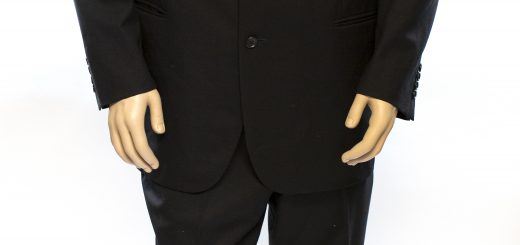Fundación MAPFRE in Madrid (Spain)

LEWIS BALTZ
FROM FEBRUARY 9th THROUGH JUNE 4th 2017
DATES February th thro9ugh June 4th 2017
LOCATION Bárbara de Braganza Exhibition Hall
(C/ Bárbara de Braganza, 13, 28004, Madrid)
CURATOR Urs Stahel, cinudraetpoern dent
PRODUCTION Exhibition produced by Fundación MAPFRE
WEB http://exposiciones.fundacionmapfre.org/lewisbaltz
Facebook http://www.facebook.com/fundacionmapfrecultura
Twitter @mapfrefcultura
Instagram @mapfrefcultura
Hashtag #expo_lewisbaltz
For further information please contact Alejandra Fernández and Marina Calvo at
MAPFRE Corporate Communications. Tel. 915818464 & 690049112 email:
alejandra@fundacionmapfre.org; clmarin@mapfre.com
From February 9th through June 4th Fundación MAPFRE is proud to present the
exhibition Lewis Baltz at its Bárbara de Braganza exhibition hall. This is the first
exhibition in Spain dedicated to the work of the North American photographer and the
first international retrospective after his death in 2014.
Through roughly 400 pieces, the exhibition presents the complete body of work of
Lewis Baltz, from his first series in black and white taken in the 1960’s and 1970’s such
as The Prototypes Works, up to his pieces in color and the exploration of new artistic
languages in latter years as in Ronde de Nuit or Venezia Marguera.
Lewis Baltz (Newport Beach, California, 1945 – Paris, France, 2014) is one of the most
important photographers of the second half of the 20th century. His work has
traditionally been associated with the generation of photographers that participated in
the New Topographics exhibition, which questioned the idea of landscape as a
beautiful, existential, and almost sacred image, and instead presented it as an actual
result of man kind’s frequently unfortunate actions.
Photography was the instrument Baltz used as a means of expression, as a tool for
research and knowledge, in line with philosophical and artistic currents during the
sixties and seventies. In such, Baltz acted as a direct photography professional but, in
terms of content, he was a conceptual artist and his education was forged within the
artistic context of the time.
Lewis Baltz began taking photographs when he was only 12 years of age encouraged
by William Current, his photographic mentor. Admirer of Robert Frank but more so of
Edward Weston and the value of his artistic mission, Baltz studied at the San Francisco
Art Institute (1969) and at Claremont Graduate School in California (1972). His earliest
works date back to his time as a student, The Prototype Works and The Tract Houses
series, which he exhibits in 1971 at influential New York gallery Leo Castelli. In 1975
Baltz participates in the exhibition New Topographics: Photographs of a Man-Altered
Landscape (George Eastman House, Rochester, NY), which signifies a break from the
idealized vision of landscape that American photography had traditionally projected.
Together with photographers such as Robert Adams, Bernd and Hilla Becher, Frank
Gohlke, Nicholas Nixon or Stephen Shore, Baltz stops looking at pristine nature,
national parks, turning his gaze towards cities, used landscapes that are worn,
transformed, capitalized, he becomes interested in the suburbs that rapidly sprawled
and proliferated throughout the cities of the United States. Landscape had become
territory that was delimiting, excluding and above all occupied. From within this
generation of photographers, Baltz is above others the artist who is able to turn this
new image away from old romanticism and provides it with a new understanding.
His series Tract Houses, New Industrial Parks near Irvine, California, Maryland,
Nevada, Park City, St. Quentin Point, Continuous Fire Polar Circle, Near Reno and
Candlestick Point explore these new ideas developed around landscape. Initiated
during the late 1960’s and taken until 1989, they are all composed of small black and
white photographs that were meticulously arranged as a grid on a wall according to the
series.
From 1989 onward Baltz’s work suffers a radical transformation. In this second phase
the fundamental idea that urbanism (and all contemporary life) is the materialization of
power, and that power is the ideology in itself is still present throughout. Nevertheless,
Baltz understands that a new era of mass media has begun and social events are
initiated and depicted exclusively by media. The result is that media produces a hyperreality
and as a consequence, it is impossible to distinguish between authentic and
simulated events. The indistinguishable character of fact (historical) and simulation
(media generated) results in the complete loss of access to a reality that can be
tangibly experienced. Fundamental works from this phase are Rule without exception,
Piazza Pugliese, Sites of Technology, Ronde de Nuit and Venezia Marguera.
Lewis Baltz
Piazza Pugliese, from the series Generic Night Cities,
1992
Stedelijk Museum Collection, Amsterdam
©The Lewis Baltz Trust
The exhibition thus presents a complete vision of Lewis Baltz’s entire career as a
photographer whose work does not solely adhere to the generation of young artists
gathered around the New Topographics exhibition but that undergoes an important
evolution in terms of theoretical approaches and interests.
EXHIBITION OVERVIEW
The exhibition has been articulated through Lewis Baltz’s most important series and
works and follows a chronological order that is interrupted at certain times with the
objective of establishing a dialogue between his early and later works:
The show begins with The Prototype Works, (1967-1976), produced during his years
as a student at the San Francisco Art Institute and reflect the dedication of a young
Baltz towards contemporary American art for its similarities (whether formal or contentwise)
with the works of Robert Mangold, Barnet Newmann or Donald Judd. The
prototypes juxtapose two aspects. On one side, they capture Californian architecture
whose elements convey a sense of abandonment, of decline, a sense of being on a
dead end street, a sense of melancholy. Other works such as the images of cars, the
view of the city, the billboards and neon signs produce a remarkably fresh and
attractive effect, as if Baltz was working with the dichotomy between the real and
symbolic worlds, somewhere between the harshness of reality and the world of desires,
as if the signals of the commercial world were ricocheting off of the muted walls of the
constructed world.
Lewis Baltz
Monterey, from the series The
Prototype Works, 1967
Galerie Thomas Zander, Cologne
©The Lewis Baltz Trust
In Tract Houses (1969-1971) the artist depicts a housing development with singlefamily
homes which is being constructed near a highway. Baltz narrows the angle of
view until showing only the façades, windows and doors that are yet to be opened. The
photographs are almost always frontal: fragments of façades, windows and doors are
so sharp and precise that the dirty, rough and still unplastered surfaces of the houses
appear to the viewer as a tapestry of materials, and remind us of the contours in the
works of abstract expressionist
painters.
South East Corner, Semicoa, 333 Mc
Cormic, Costa Mesa, from the series The
new Industrial Parks near Irvine,
California, 1974
George Eastman Museum, Rochester
New York, Donation of the
Photographer
© The Lewis Baltz Trust
Baltz continues to explore these ideas in The New Industrial Parks near Irvine,
California (1974), series which combines images of buildings from close up views with
views of the landscape and the location of cubical industrial warehouses. The façades
reveal almost nothing, neither of themselves nor of what is hidden behind them or their
possible function. This series confronts the viewer with an economized modernity, with
the minimalism stemming from a cost-effectiveness that determines the cubic and
banal shape of the buildings, simply because it was cheaper to build than everything
that existed previously.
In Maryland (1976) the artist portrays, from a sometimes slightly elevated view, a
single-family home housing development. In this series Baltz closes in on what is
unfinished, he wanders through the landscape under early morning or evening light.
The interaction between the sunny houses and the dark grass alienates these
residential areas, transforming them into a sometimes unsettling scenario. Baltz, whose
presence is only noticed through the lens of the camera, appears nonetheless very
present, “stalking” the environment, exploring and unknown place.
In Nevada (1977), Baltz presents the viewer with fifteen photographs that depict the
transformation of a landscape which is completely influenced by man. The underlying
idea is that urban speculation and desertification have become the norm. At the same
time, the line that separates the observer and the inhabitant has become definitively
blurred, since the concept of landscape is abruptly changed by implicit human
intervention.
This same concept is found, albeit at a larger scale, in Park City (1978-1980). This
series is composed by 102 photographs and portrays the construction of a commutertown
built on contaminated land that was once a silver mine near Salt Lake City, a
large-scale real-estate project from which the developer hoped to obtain an enormous
return and which Baltz photographs and explores like a topographer, annotating
positions and orientations of each shot.
After Park City we find a new phase within
the first stage of Baltz’s career. In it the
photographer becomes interested in
showing the disarray, chaos and debris
that aggressive human intervention leaves
behind in nature. Thus, in Continuous
Fire Polar Circle (1986) we see giant
heaps of trash produced by consumer
society, and in Near Reno (1986-1987)
the artist alternates images of a landscape
that has been altered by man with others
capturing decomposition and the active
destruction it brings about. The series San
Quentin Point (1981-1983), shows a
dumpster near the San Francisco bay
area. Baltz approaches this location on
foot, almost as if he were a detective,
photographing the landscape from outside at first. Later with the garbage in sight, he
turns his view, and observes what is happening on the ground with precision.
The series of works transmits a charged sensation, full of tension and ambivalence
making the series a symbol for a collapsing society. This phase is closed by
Candlestick Point (1987-1989), a series composed of 84 photographs that are
arranged on the wall as if they were a landscape, while leaving deliberate gaps
between the images. This is the culmination of the representation of an entropic
landscape, in which Baltz withdraws as a creative figure and allows his camera to take
charge. In this series, no particular image stands out, instead the group in itself is the
image, one can observe the first instances of color photography in Baltz’s work.
This series signifies the end of the first stage in Baltz’s body of work. The year 1989
marked a radical turn in the photographer’s career, he abandons photography as he
understood it up to that time, and he leaves the United States to establish himself in
France. From that point onward, he becomes less interested in images of landscapes
and begins to work on the landscapes of images: the postindustrial space of
surveillance, spectacle and alienation. In this new phase Baltz chooses color
Lewis Baltz
San Quentin Point no. 8, de la serie San
Quentin Point, 1983
Fondation A Stichting, Bruselas
© The Lewis Baltz Trust
photography as the best instrument to express his new interests. Series such as
Generic Night Cities (1989-2000) as well as Piazza Sigmund Freud (1989) or Rule
without Exception (1988) are clear examples, nighttime urban landscapes in color
lacking any form of natural light that would allow for a natural ordering, and the many
artificial lights, both fixed and in movement, attract and direct our attention. In this way,
Baltz portrays the city as a parking structure or a traffic lane, stop and go, in the way of
a high pitched urban laboratory. The photographs, some of which are up to two meters,
are thin, flat and multi-colored, like command modules, and the cities represented in
them seem to be open electronic circuits, a machinery of greed and power activated by
the motor of neoliberal exploitation and in such, lacking a view of the future.
In Power Trilogy, composed by Ronde de Nuit, Docile Bodies and The politics of
Bacteria, the artist continues to focus on the subject of surveillance, control and
research. The exhibition presents the first two. Each one is a module, two to two and a
half meters in height and twelve meters in length, divided into segments. For the
production of these works Baltz worked almost exclusively with images from his own
archive, he selected, transformed and enlarged the parts he was interested in until
obtaining the finished piece, which works as a monumental mural. This is the
culmination of what Baltz had done in his early work: the confluence of the plane of the
photograph and of the support with the plane of the wall, the coincidence of image and
world, of world and image. In Ronde de Nuit (1992-1995), inspired by a reading of
Dante’s Inferno, excerpts from a surveillance tape from a police station are mixed with
images of cables, hoses and a large computer. In Docile Bodies (1992-1995) images
of neurosurgery allow the spectator to penetrate the skin, the appearance of things
entering the body and its mechanism. In turn, we are presented with a completely new
form of submission, a new form of power; the docility of the body in the face of
knowledge organized as force and power, the intrusion into the inviolable, into the
body’s intimacy.
Lewis Baltz
Ronde de Nuit, 1992‐1995
Private collection
©The Lewis Baltz Trust
An important aspect within this last phase in Baltz’s work is that of the narrator as is
reflected in The Deaths in Newport (1988-1995). Composed of a selection of
photographs and documentation from journalistic archives that are accompanied by the
artist’s own narration, the piece tells the story of a crime that shook a small town in
southern California during the 50’s. Baltz recalled this story from his childhood as his
own father had been one of the key witnesses.
With this same narrative intention, but exploring the language of video, Baltz produces
End to End (2000) commissioned by Lina di Confine per la Fotografia
Contemporanea. In this piece the artist narrates the economic and political story of
Emilia-Romaña after World War II. The exhibit ends with the last work produced by the
artist: Venezia Marghera (2000/2013), a portfolio in which he depicts the impossible
coexistence of Marghera and Venice, offering his final vision of human-altered
landscapes: the industrial town of Marghera, close to Venice, which in turn has become
overburdened with mass tourism.
CATALOGUE
On the occasion of this exhibition a catalogue has been published in two editions,
Spanish and English, including texts by curator Urs Stahel, an interview with Lewis
Baltz by David Company and a text by American artist Walead Beshty. The publication
also includes images of the works present in the show as well as a chronology on the
artist by Carlos Martin.


